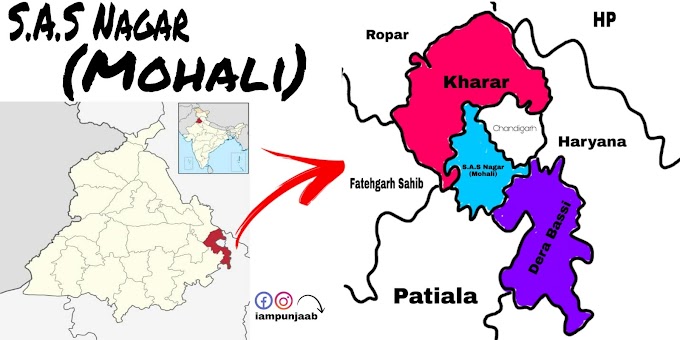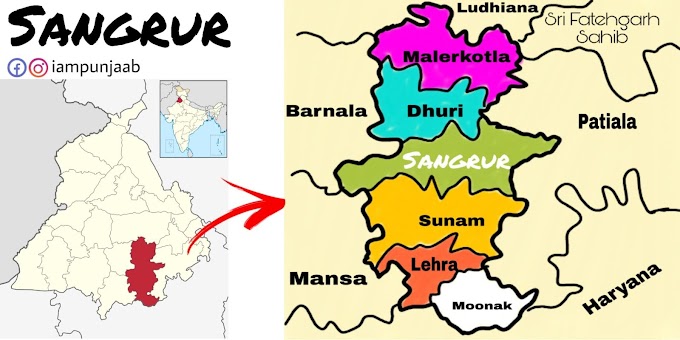 |
| Jallianwala garden where this horrible incident was happened, Bullet marks, place from where people were fired, a Martyrs well in which people were jumped to save them from bullets, in center the pic of Shaheed Udham Singh and General Reginald Dyer, at last a memorial tower was built on this site. |
The pain of Bloody Mourning or Massacre
of Amritsar that took place on land of Majha
region, in Amritsar district of
Punjab, on the day of Baisakhi
festival, is still felt throughout the country. It was the extreme boundary of
the tyranny of the English sovereignty, which bleed the land of Amritsar in Majha region. The massacre took place on April 13, 1919, at Jallianwale
Bagh in Amritsar, Punjab. Where thousands of innocent people were
peacefully protesting, Bloody rivers were flown by General Reginald Dyer and his military companions in indiscriminate firing. Hundreds of people were killed and thousands
injured in the massacre. It has been 100
years since last year in 2019, and a tribute has been paid to the martyrs
of this massacre at the National and International level. But in 2020, this
massacre has completed 101 years.This
year, Baisakhi festival was not celebrated by all because of the Corona virus,
and all the people stayed in their house with their family, so that people from
country and abroad could not get a chance to visit the Jalliawala garden.
The British government's decision
to implement the Rowlatt Act, was to
end the people's desire to liberate their country. The Rowlatt Act was a law that gave, the right to the British to send
anyone to jail without trial. The person had no right to appeal or to prosecute. The Act also seized the
personal liberty of the people. Opposition to the act began with numerous
movements under the leadership of great leaders across the country, and the
flames of this rebellion increased even more in Punjab when Dr Saifuddin Kitchlew & Dr Satyapal,
the popular leaders of the people in Amritsar,
the famous city of Majha region, was
arrested and detained in another city. As soon as the people found about this,
they started expressing their anger with
slogans.
The British fired at them to
control the mob, which eventually
killed many people on the spot. The mob was even more shocked to see this. On
the way back, the mob started beating whatever English official they found, to express their anger. After all this,
the government handed over the entire Amritsar city to military on April 10.
Amidst such violent incidents, the
situation in Amritsar had become
very critical. At that time the Governor-General of the Punjab was Sir Michael O’Dwyer. General Reginald Dyer was in Jalandhar when he
was summoned to Amritsar on the evening of April
11th . On the 13th of April, the gathering began to
commemorate the festival of Baisakhi to Darbar Sahib. Many people also stopped
to rest in the Jallianwala garden
near the Darbar Sahib. In Jallianwala Bagh, there was a peaceful protest
against the Rowlatt Act, in which
various speakers from the forum were addressing
the people.
The crowd grew, but the people
continued the ceremony in a peaceful way.
When General Dyer learned of the news, he reached the Jallianwala orchard with
a troop of his fellow soldiers. They closed
the only passage leading into the garden. Without any warning, he ordered
to rain firearms and indiscriminate
bullets on assembled people at the Jallianwala garden. Amritsar's earth shook with the shouting of thousands of people. Within 10 minutes,
thousands of bullets, present at the
gathering, saw no child or no women or even no old man. Many people jumped into
the well of garden to save their
lives. The well is said to have been filled
with people's dead bodies. After
this tragic event, Martial Law was
implemented throughout Amritsar. A Hunter
Commission was formed to investigate the incident, which condemned General
Dyer's action but did not recommend any harsh
punishment and ordered a deportation to England.
Even today, this martyr well
is present in the garden. Bullet marks
of the thousands of bullets fired by General Dyer and his troop, can be seen on
the garden walls. The place where
Dyer carried out this horrific act, that place can still be seen in the narrow street of garden.
The young boy, who saw the bloody Massacre of Jallianwala Bagh, whose name was Udham Singh, who was from Sunam town of Sangrur district of Punjab, swore an oath to take revenge of this massacre from perpetrators. After a 21-year-long uprising, he completed his oath at London's Caxton Hall by firing on the Governor General of Punjab in 1919, Sir Michael O’dwyer. In 1940, Udham Singh was hanged in England for murder. It is said that General Dyer, who played the bloody holocaust, died of a heart attack. Before that he was paralyzed and his speeching power was lost.
Renowned Punjabi writer S. Nanak Singh composed a poem called Khooni Baisakhi on this tragic event.
Shortly after it was published, it was banned
by the English Government. Ravindra Nath
Tagore, the famous Indian poet who won the
Nobel Prize for Literature, returned the
title of knighthood given by the British as a protest after the bloody
mourning of Jallianwala Bagh. The
situation in Punjab was very bad in 1919. The people were very angry with the
English government rules because of the various taxes imposed on them. The
massacre of the Amritsar has intensified the battle for independence.










0 Comments